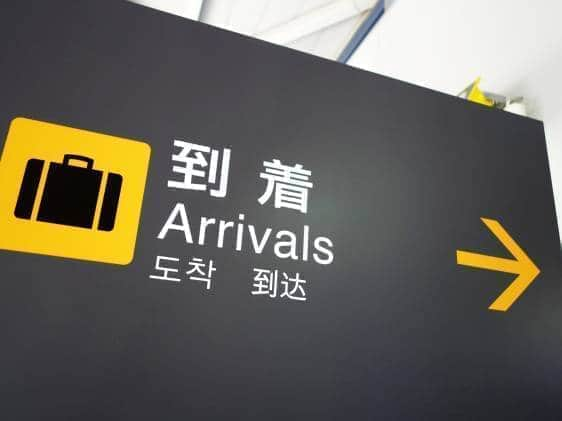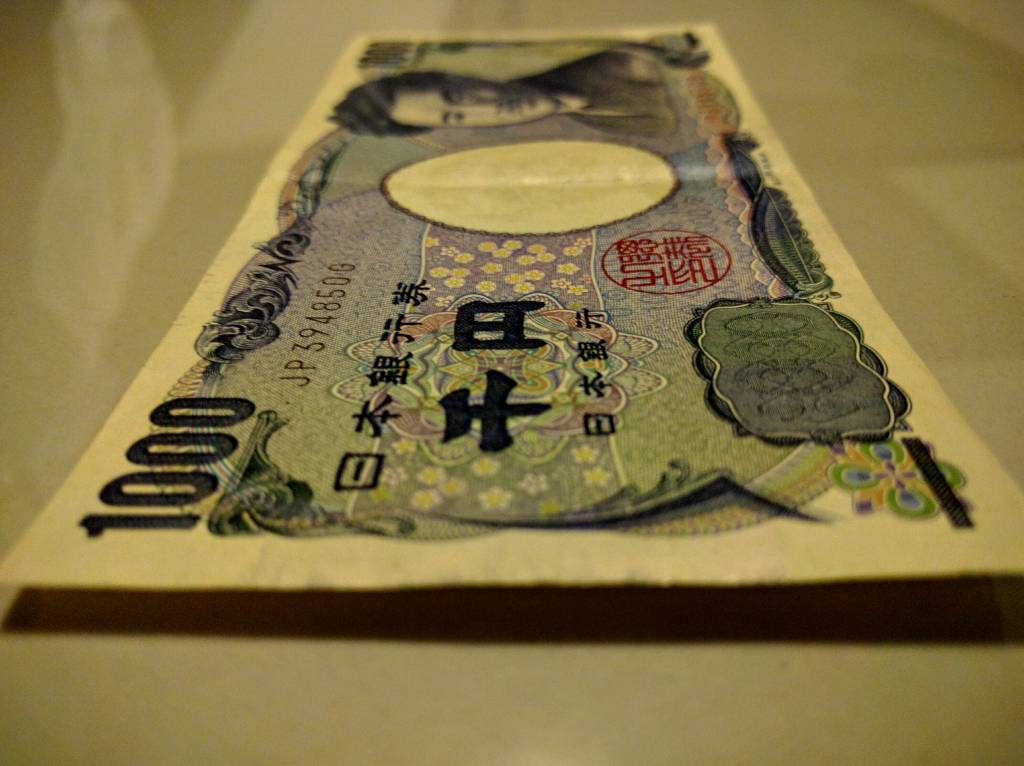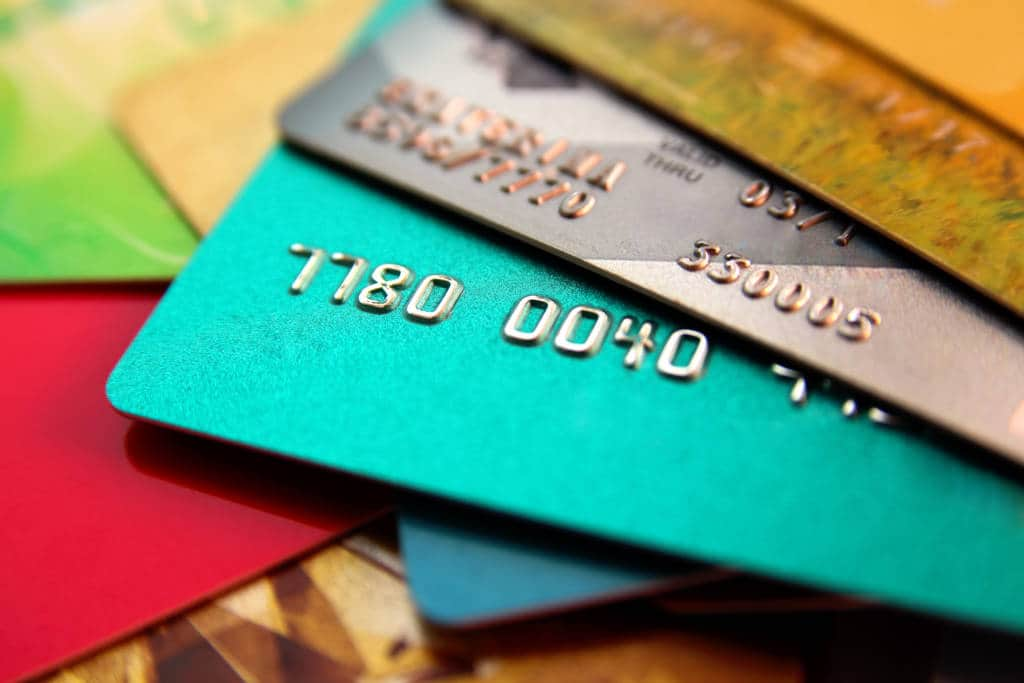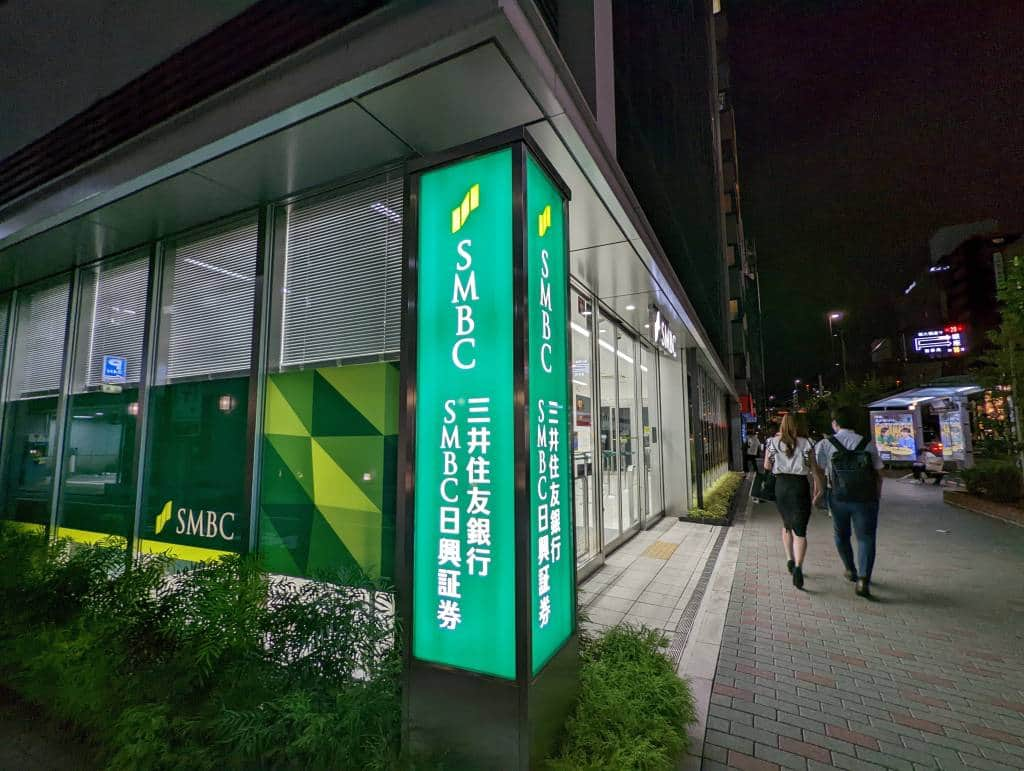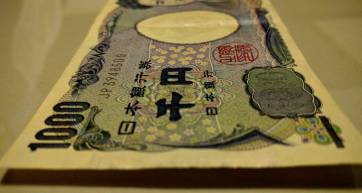If you’ve been working in Japan for a while and following all the money-saving advice on this site, by now you’ve probably built up a pile of cash. While you could spend your stash on a gold-laced cocktail at the Mandarin Oriental, you might want to consider sending it home, or to a country that doesn’t have negative interest rates. So what are your options to send money from Japan?
N.B. If you want to send money to Japan, see our dedicated guide to transferring money to Japan.
Jump to:
Regular bank transfers from Japan: Costly, slow and complicated
Japan is renowned for its stable banking system, but that’s because the banks haven’t really changed the way they do business in 20 years. A simple international transfer at legacy banks like SMBC, MUFG or Mizuho will typically involve you filling out an overly detailed form at the branch or an hour-long phone call, getting charged up to ¥4,000 just for the transfer, and then getting shafted with horrible exchange rates. Unless you’re set on being a martyr to the Japanese banking system, our advice is to avoid this option.
Wise (formerly TransferWise): Economical, quick and easy
Wise have been around globally since 2011 (they recently changed their name from TransferWise to Wise). They allow you to transfer your funds to a local bank account before they get whisked overseas. The main benefit of Wise is they don’t make money on the exchange rate, and they try to make the whole procedure as fast, smooth and painless as possible. Several of our Cheapo staff members use Wise for international transfers.
The cost structure is this: You pay a fixed fee, plus a percentage of the total amount. What you pay depends on which currencies you’re using, but it’s very reasonable for most of the major ones. The exchange rates (when we checked) were almost identical to those on exchange rate reference site xe.com, which lists mid-market rates.
How to use Wise (TransferWise)
To transfer, you go to their website and put in the amount that you want to send (in either the source or target currency), then create an account. You’ll be asked to upload photos of either your “My Number” notification (that’s the plain piece of paper) or your My Number photo ID. If you have the photo ID, that’s all you need to upload; if not, you’ll need to upload a scan or pic of some other photo ID, such as a Japanese driver’s license or a foreign resident’s card.
Once you’ve uploaded your docs, you’ll get a confirmation screen with the details of your transaction. After you agree to this, you’ll get information of a local account with PayPay to transfer the total amount to. You can go ahead and make the transfer. (Note that if you’ve signed up for a new account, the transaction won’t go through until your documents have been checked off.) You can download the app for easy transactions going forward.
Note: Following the above steps should allow you to make a transfer of up to ¥100,000. However, in line with revised Japanese banking regulations, you will need to sign for the postal delivery of a letter with a special code, before you can send higher amounts, or make a second transfer.
How long does Wise take?
Wise gives you an estimate of when the money will arrive in the destination bank account—approximately 2-4 days, usually. But with our test transfers, which included accounts in the UK, New Zealand and South Africa, the funds have arrived in just 1-2 days, and often on the same day.
How much does Wise cost?
The following was calculated using the transfer calculator on the Wise website on August 31, 2023. For the sake of comparison, we chose a transfer to USD.
*We deducted the fees from the starting amounts for this calculation and all other calculations below.
| JPY Amount | Fee (JPY) | Rate (USD->JPY) | USD Amount | Rank |
|---|---|---|---|---|
| 10,000 | 142 | 142.315 | 69.26 | 2 |
| 100,000 | 732 | 142.315 | 697.52 | 1 |
Rates on August 31, 2023
Nice extras: Wise also offer a borderless, multi-currency account. It’s basically an international bank account, minus the fees, and it comes with a debit card (Mastercard). You can read more about the Wise multi-currency account here.
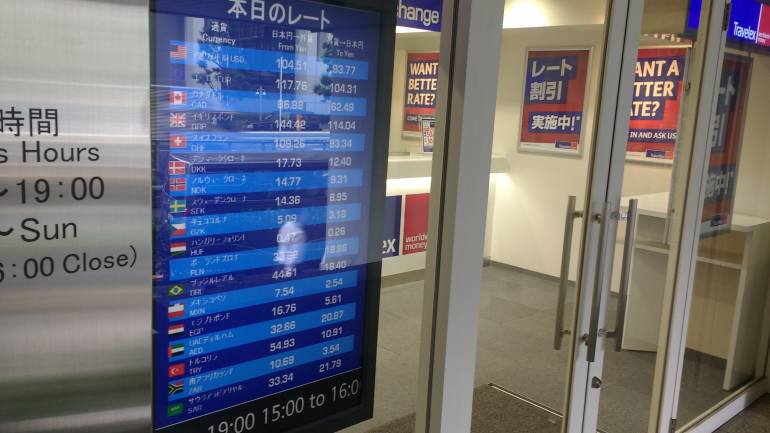
GoRemit: Formerly the default option for expats
GoRemit is the crusty incumbent to Wise’s feisty challenger (GoRemit has been at this for more than 15 years—they were formerly GoLloyds). The process is basically the same, but the fee structure is slightly different. While the exchange rates are more or less the same, the handling fee is a flat ¥2,000, and there may be an additional charge of at least ¥1,500 for any remittances done in Japanese yen. We haven’t deducted the extra ¥1,500 below—but keep it in mind.
GoRemit sign-up is a bit of a process—you can use the app to do it, but need to sign for key documents in the mail afterwards. Registering a beneficiary can take several weeks, and your transfer limit is pre-determined by GoRemit—it seems to be a case-by-case decision for each user. You might need to use a combination of the app and online banking to complete a remittance. Also, you’ll need to update your profile every time you renew your residence card.
How much does GoRemit cost?
| JPY Amount | Fee (JPY) | Rate (USD->JPY) | USD Amount | Rank |
|---|---|---|---|---|
| 10,000 | 2000 | 141.88 | 56.39 | 5 |
| 100,000 | 2000 | 141.88 | 690.72 | 3 |
Rates on August 31, 2023
Seven Bank: Easy but expensive
Seven Bank offers a service in conjunction with Western Union. While you could just use Western Union without using Seven Bank, the integration with the bank account sometimes makes things a bit smoother. The fee you pay increases with the amount you send. You need to register for their International Money Transfer Service in advance—you can get the process started online, but all of the usual paper-based document checks (including My Number) apply.
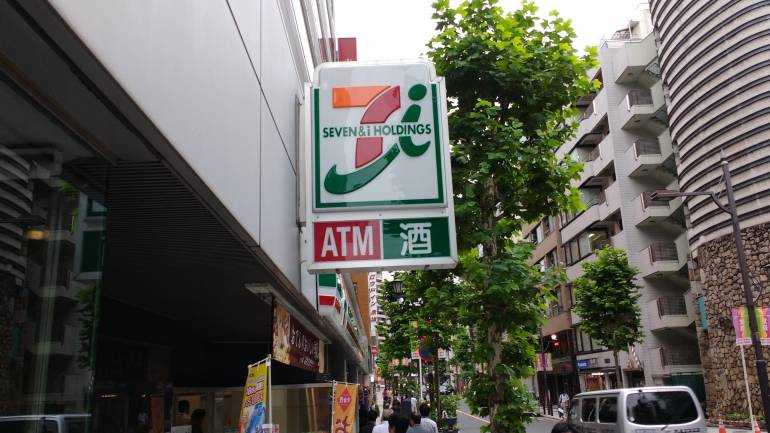
How much does Seven Bank cost?
| JPY Amount | Fee (JPY) | Rate (USD->JPY) | USD Amount | Rank |
|---|---|---|---|---|
| 10,000 | 990 | 0.006745 | 67.44 | 4 |
| 100,000 | 2,000 | 0.006745 | 674.49 | 5 |
Rates on August 31, 2023
Western Union in Japan
The go-to for many people, Western Union is a reliable—if sometimes cumbersome—way of sending money from Japan. You can set up the transfer online or via their app, or do it in person at one of their branches—there are almost 90 listed for Tokyo. Western Union supports transfers to over 200 countries.
How much does Western Union in Japan cost?
For cash pick-ups, there is a starting fee of ¥390. These are what we simulated below, using bank-account-to-cash transfers. Note that bank-to-bank transfers may be cheaper, or sometimes fee-free. Also note that Japan-US transfers, as well as many other transfers, appear to be capped at ¥1,000,000. One final note—cash-to-cash transfers appear to be faster, though pricier.
| JPY Amount | Fee (JPY) | Rate (USD->JPY) | USD Amount | Rank |
|---|---|---|---|---|
| 10,000 | 390 | 0.007 | 69.71 | 1 |
| 100,000 | 600 | 0.007 | 697.11 | 2 |
Rates on August 31, 2023
WorldRemit
We’ll be honest—we haven’t tested out WorldRemit yet, but we’ve been hearing good things about it. What we can tell you is that the rates seem competitive, and both the website and app seem easy to use. Apparently WorldRemit is particularly popular with folks from the UK, North America, Australia and France, but you can transfer money from Japan to more than 140 countries around the globe.
As is the case with many other transfer services in Japan, you’ll need to provide a bunch of paperwork (photo ID, My Number, proof of address etc.) before you can start making remittances.
How much does WorldRemit cost?
Transfer fees from Japan to the US are a flat ¥200, regardless of the amount you send. Your monies should arrive by the next working day. Depending on the destination, you may be able to choose between a bank transfer and debit card payment to send the funds.
| JPY Amount | Fee (JPY) | Rate (USD->JPY) | USD Amount | Rank |
|---|---|---|---|---|
| 10,000 | 200 | 0.0069 | 68.57 | 3 |
| 100,000 | 200 | 0.0069 | 685.72 | 4 |
Rates on August 31, 2023
Revolut
Revolut is one of the fastest growing financial technology companies in the world, and it’s much more than just an app for transferring money internationally. Full disclosure: We haven’t fully tested out Revolut ourselves, yet, but it seems pretty awesome, with competitive rates.
How much does Revolut cost?
Revolut Japan has a (free) Standard plan that allows you to transfer money at the interbank exchange rate. If you choose their Premium plan at ¥980/month or their “Metal” plan for ¥1,980/month, you’ll get “no fee currency exchange”, along with a whole lot of other perks.

Using Revolut in Japan
When you sign up for Revolut in Japan, you get a free debit card—either a physical card for contactless payments, or a disposable single-use virtual card. The paid plans come with fancier options. As the name suggests, the Metal plan comes with a stainless steel card. For more on cash cards, see our article on getting a debit card in Japan.
To start the mandatory verification process, the Revolut app gets you to take a selfie and you’ll need a Japanese drivers license, a My Number card, or a residence card to prove that you are a legal resident of Japan. However, there are two steps to verification: first, a basic identity verification, and then a second verification required for sending money internationally. The second requires registration of your My Number card (or notice), so if you have one, you might as well use it for the first step instead of using your Japanese drivers license or your residence card.
Once your verification is complete, you’re good to go, and can send money to a designated bank account or directly to a contact.
Alternative ways to send money from Japan
The options we’ve included here are not the only ways of sending money from Japan to another country—there are a number of alternatives. For transfers to certain countries, such as Bangladesh, Malaysia, Vietnam, Nepal or the Philippines, Japan Remit Finance (JRF), SBI Remit, Brastel or Japan Money Express might be more familiar names. It’s worth investigating a range of cash transfer services to determine which will give you the most competitive rates.
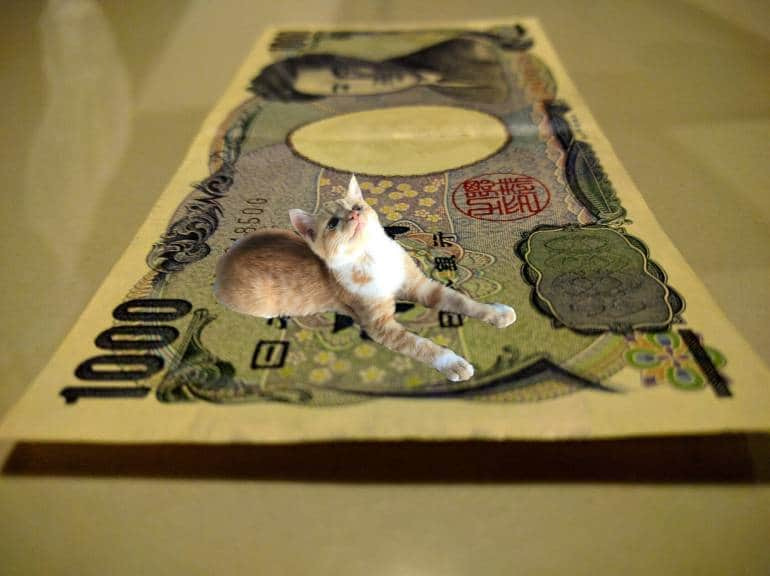
PayPal in Japan
Due to difficulties confirming transfer rates and fees, we have excluded PayPal from the ranking above. PayPal is by far the most opaque of the money-sending services; depending on the currency pair, there may be a conversion charge of between 0.5% and 4%. However, it’s not terrible for sending money from Japan to an account overseas.
A couple of points to consider are that while easy to use once it’s set up, getting money into your PayPal account from your bank can take a little while. Also, there may be restrictions on the receiving end. Depending on the country, the recipient may not be able to receive the cash you are sending. Apparently, measures like these are to stop money laundering and terrorism. As you may have noticed, both of these activities are flourishing, so I guess they got that one wrong.
Anyway, once you’re set up on PayPal, the currency transfer itself is instant. However, you need to consider the time it will take to deposit and withdraw or spend the funds. This varies by each country’s banking regulations, and whether you’re withdrawing to a card or bank account. For example, even though the UK has the Faster Payments Service (which is effectively instant), PayPal still typically takes one business day for bank account withdrawals.
International forex and share brokerages
If you’re already speculating or investing in stocks and financial markets, you might find that your brokerage supports the connecting of bank accounts from more than one country, and in multiple currencies. This will allow you to send money from your Japanese account to the brokerage in yen, exchange to another currency, and then transfer out to your bank account in the destination country.
The forex exchange rates on brokerage accounts can be very competitive and usually allow for more sophisticated transfers, which can also improve the rate you get (for example, setting a stop and/or limit order to exchange only if a certain exchange rate is reached or held). However, this is probably one of the most complex ways to send money from Japan. See our article on opening a brokerage account in Japan for more information.
Our recommendations for sending money from Japan
Small to medium amounts
For small amounts and even amounts into the hundreds of thousands of yen, Wise generally appears, to us anyway, to be the best-value and most convenient option (you can transfer up to ¥1,000,000 in a single transaction, once your paperwork has been approved).
WorldRemit, Western Union and Revolut are also worth checking, thanks to their competitive rates. For amounts over ¥200,000, GoRemit might start to make sense. PayPal is also relatively good for small amounts of money, even though the exchange rate is often fairly poor.
Larger amounts
For large transfers of yen outside Japan, GoRemit or, provided you are not registered as a long-term resident of Japan, OFX as their rates are much more competitive for higher value transfers.
Choice of currencies
Wise, Revolut, Western Union, WorldRemit and Seven Bank win out in terms of the number of currencies available. GoRemit is limited to 11 foreign currencies: USD, CAD, GBP, EUR, AUD, NZD, CHF, HKD, SGD, SEK and INR. Last we checked, PayPal could handle up to 24 currencies (with some conditions attached).
Ease of use
Wise (and Revolut) are probably the best when it comes to ease of set-up and use. Once set up, they are all relatively easy to use, though, for sending money from Japan.
Reference: Mid-market rate from xe.com at 19:30 JST on August 31, 2023: 1 JPY -> USD 0.0070356
Pro tip: Looking to transfer money in Hong Kong? See our guide to moving money out of Hong Kong.
This article was last updated on August 31, 2023.


